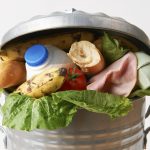 The USDA estimates that more than 30% of all food products in the United States are thrown away, costing the nation more than $161 billion per year, with equally significant environmental costs. This is often due to an inefficient supply chain.
The USDA estimates that more than 30% of all food products in the United States are thrown away, costing the nation more than $161 billion per year, with equally significant environmental costs. This is often due to an inefficient supply chain.
It’s a problem that has prompted a range of innovations all the way from farm to store. For instance, British startup the Small Robot Company have combined robotics and AI to ‘digitize the field’ and therefore offer precision farming on a ‘farming as a service’ model. The aim is to provide the farmer with detailed information on their land, all the way down to a profit map that highlights the best areas to use, the best areas to rest and which plants to sow where and when.
The team believe that this use of technology would significantly reduce the amount of chemical used in arable farming, with estimates of both chemical and energy usage reductions of around 90%.
Smarter transit
There have also been innovations in the transit of foodstuffs. For instance, a team from the Federal Laboratories for Materials Science and Technology in Switzerland have developed sensors to monitor the state of fruit as it travels from farm to store. The sensor is designed to record the experience of the fruit in the pallet as closely as possible, so is the same size and composition as a fruit. The sensor provides constant feedback on the temperature in the container, because even minute changes are capable of significantly changing the speed at which picked crops ripen. This not only influences food wastage, but also creates variance in the use-by date on the produce.
Californian startup Zest Labs are bringing a similar technology to market. Their solution provides real-time data on the pallet to help people make smarter logistics decisions. For instance, if the contents are ripening quicker than expected, that produce can be re-routed to a nearer store to retain a good shelf life. When I spoke to the Zest Labs team earlier this year, they revealed that initial projects with retailers have allowed them to save around half of the 18% of produce that would ordinarily go to waste.
Smart sanitization
Further along the supply chain you’ve got Swiss startup ebeam Technologies. A brand of the Comet Group, ebeam uses electron beams to sanitize crops and other dry foods, much in the same way that liquid food packaging is treated during the processing stage.
The technology is capable of sanitizing the food without damaging either the crop or its taste in any way. They’re currently partnering with Swiss food giant Bühler to test out the technology, with the first installation at a Kündig facility in Germany.
A crucial aspect of the technology is its ability to sanitize the foodstuff without reducing essential qualities of the food. In early tests on coriander, for instance, ebeam was able to sanitize the coriander whilst only slightly reducing the essential oils, with roughly 3 times less oil lost than when treated by steam.
They’re working with the Swiss food safety institute Agroscope to develop skills and competencies around the technology, but one of the key aspects in the development of the sector will be in the information that flows along the supply chain about each crop.
Smart data
Food giant Cargill’s have been experimenting with blockchain technology to help track turkeys from farm to market and give both consumers and supply chain staff a better understanding of the providence of each bird.
Consumers can text an SMS message complete with a code found on a tag on their turkey to determine exactly where the bird was from. The information is held in the blockchain.
Whilst the project is only small-scale, it does nonetheless provide an interesting insight into how information about the food we eat can be stored. With people increasingly keen not only to understand the nutritional contents of their food, but its providence, safety and environmental impact as well, blockchain is likely to be an important tool in providing that level of transparency.
Efficient production of safe food has huge implications, both for mankind but also for the environment. The aforementioned innovations are just a handful of those designed to make the process more efficient. All are at a relatively early stage of their journey, but it will be fascinating to watch their progress.